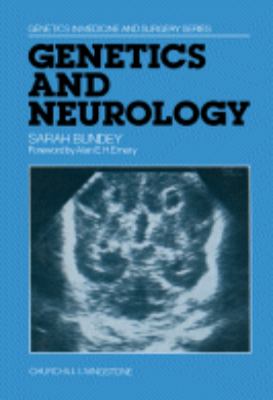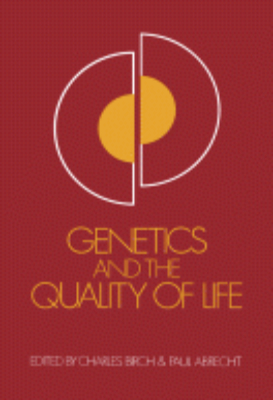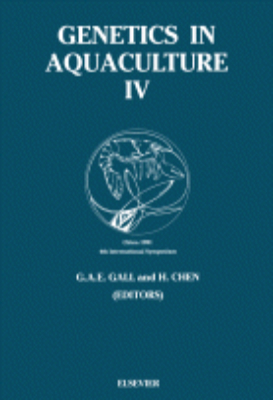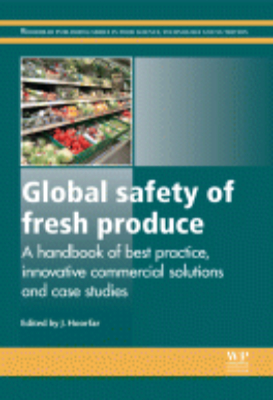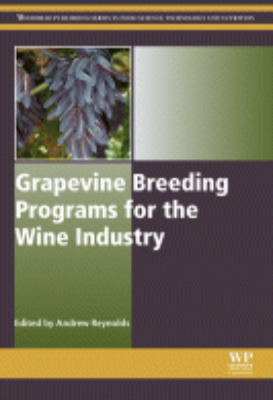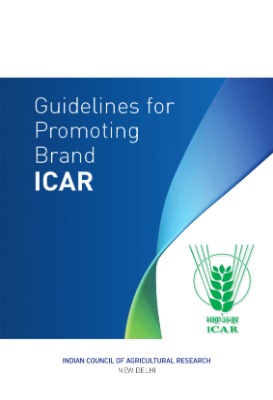ebooks
Genetics and Biotechnology of Bacilli: Volume 3
Genetics and Biotechnology of Bacilli, Volume 3 covers the proceedings of the Fifth International Conference on Genetics and Biotechnology of Bacilli, held on July 9-12, 1989 at the Asilomar Conference Center, Pacific Grove, California. It summarizes the remarkable progress made in the genetics and biotechnology fields of Bacilli. It is organized into four parts, encompassing 43 chapters, which focus on gene regulation and structure, enzyme structure, Bacillus thuringiensis toxins, and stationary phase gene regulation. Part I covers topics related to gene regulation and structure of Bacilli, such as control of gene expression, mutation, genetic organization, DNA sequence analysis, and identification of transcript units. It also discusses gene replication in Bacillus subtilis plasmids, levanase operon of B. subtilis, and characterization of global regulon in B. subtilis. The next part of this book focuses on the structure of various enzymes found in B. subtilis, including alpha amylases, subtilisin, alkaline phosphatase, and levansucrase. Part III discusses the generation of functional B. thuringiensis toxin hybrid genes, regulation of crystal protein gene promoters, toxicity of B. thuringiensis delta-endotoxin, and insecticidal activity of chimeric protoxins. The concluding part covers the aspects of signal transduction, regulation of differential gene expression during B. subtilis sporulation, and gene cloning and deletion for extracellular proteases of B. subtilis. It also discusses genetic and biochemical aspects of protein phosphorylation; properties of B. subtilis spores; control of stationary phase gene expression; and the novel regulatory gene, senS, of B. subtilis. This book is a valuable source of information for microbiologists, research biologists, and Bacilli enthusiasts.
Genetics and Evolution of Infectious Disease
Genetics and Evolution of Infectious Diseases is at the crossroads between two major scientific fields of the 21st century: evolutionary biology and infectious diseases. The genomic revolution has upset modern biology and has revolutionized our approach to ancient disciplines such as evolutionary studies. In particular, this revolution is profoundly changing our view on genetically driven human phenotypic diversity, and this is especially true in disease genetic susceptibility. Infectious diseases are indisputably the major challenge of medicine. When looking globally, they are the number one killer of humans and therefore the main selective pressure exerted on our species. Even in industrial countries, infectious diseases are now far less under control than 20 years ago. The first part of this book covers the main features and applications of modern technologies in the study of infectious diseases. The second part provides detailed information on a number of the key infectious diseases such as malaria, SARS, avian flu, HIV, tuberculosis, nosocomial infections and a few other pathogens that will be taken as examples to illustrate the power of modern technologies and the value of evolutionary approaches.
Genetics and Molecular Biology of Muscle Adaptation
This title is directed primarily towards health care professionals outside of the United States. It starts with the origin of life and ends with the mechanisms that make muscles adapt to different forms of training. In between, it considers how evidence has been obtained about the extent of genetic influence on human capacities, how muscles and their fibres are studied for general properties and individual differences, and how molecular biological techniques have been combined with physiological ones to produce the new discipline of molecular exercise physiology. This is the first book on such topics written specifically for modules in exercise and sport science at final year Hons BSc and taught MSc levels.
Genetics and Morphogenesis in the Basidiomycetes
Genetics and Morphogenesis in the Basidiomycetes documents the proceedings of a symposium on Genetics and Morphogenetic Studies of Basidiomycetes held during the Second International Mycological Congress. The symposium was organized as a memorial symposium to honor the many contributions of John Robert Raper, which included the hormonal control of sexual development in fungi; the biological effects of beta radiation; and the genetic control of the incompatibility systems and morphogenesis of sexuality in higher basidiomycetes. The contributions made by researchers at the symposium include studies on control of development by genes of the incompatibility system; the genetic structure of the incompatibility factors of the higher basidiomycetes; and meiosis and recombination in basidiomycetes. Subsequent chapters deal with the evolution of incompatibility; the incompatibility system as a model for the regulation of cell differentiation; morphogentic processes in Schizophyllum commune and Coprinus lagopus; and the regulatory processes which control fruiting.
Genetics and Neurology
Genetics and Neurology focuses on disorders that affect the nervous system, including atrophies, neuropathies, and tumors. The book first examines malformations of the central nervous system, phacomatoses and tumors, and cerebral degenerative disorders of childhood. Topics include malformations of the corpus callosum and neighboring structures; abnormalities of closure of neural tube; spongiform leucodystrophy; and tumors of the nervous system. The text then takes a look at extrapyramidal disorders and dyskinesias and muscle disorders. The publication elaborates on spinal muscular atrophies (SMAs), cerebellar and spinocerebellar ataxias, and hereditary neuropathies. Discussions focus on hereditary motor and sensory neuropathies of infancy and early childhood; peripheral neuropathies and lipid disorders; and congenital cerebellar ataxias. The book also discusses spastic paraplegias and multifactorial inheritance and neurological diseases. The text is a valuable reference for readers interested in genetics and neurology.
Genetics and the Behavior of Domestic Animals
"Behavior is shaped by both genetics and experience--nature and nurture. This book synthesizes research from behavioral genetics and animal and veterinary science, bridging the gap between these fields. The objective is to show that principles of behavioral genetics have practical applications to agricultural and companion animals. The continuing domestication of animals is a complex process whose myriad impacts on animal behavior are commonly under-appreciated. Genetic factors play a significant role in both species-specific behaviors and behavioral differences exhibited by individuals in the same species. Leading authorities explore the impact of increased intensities of selection on domestic animal behavior. Rodents, cattle, pigs, sheep, horses, herding and guard dogs, and poultry are all included in these discussions of genetics and behavior, making this book useful to veterinarians, livestock producers, laboratory animal researchers and technicians, animal trainers and breeders, and any researcher interested in animal behavior. Key Features. Includes four new chapters on dog and fox behavior, pig behavior, the effects of domestication and horse behavior. Synthesizes research from behavioral genetics, animal science, and veterinary literature. Broaches fields of behavior genetics and behavioral research. Includes practical applications of principles discovered by behavioral genetics researchers. Covers many species ranging from pigs, dogs, foxes, rodents, cattle, horses, and cats"
Genetics and the Quality of Life
Genetics and the Quality of Life covers the papers and report of a consultation on Genetics and the Quality of Life, held in Zurich on June 25-29, 1973, organized by the sub-unit on Church and Society of the World Council of Churches in cooperation with the Christian Medical Commission. The book focuses on the interrelation of genetics and quality of life. The selection first elaborates on genetics and moral responsibility and ethics and the new biology. Discussions focus on breakdown of values, genetically determined debility versus socially determined debility, ethical problems, and genetic inequality and moral responsibility. The text then examines ethical issues raised by eugenics, judging the social values of scientific advances, ethical problems raised by genetics, and problems raised by eugenics in Africa. Topics include the right to an adequate physical and mental endowment, genetic engineering, euphenics, constraints imposed by genetics, fertilization of human ova in vitro, and ethical questions in eugenics. The manuscript reviews findings on genetics and the quality of life, sociogenetic problems and public opinion, social and ethical problems in caring for genetically handicapped children, ethical problems in genetic counselling, and psychological issues in counselling the genetically handicapped. The selection is a dependable source of information for researchers interested in the connection of genetics and quality of life.
Genetics Environment and Behavior
Genetics, Environment, and Behavior: Implications for Educational Policy is a collection of papers from the "Genetic Endowment and Environment in the Determination of Behavior" workshop in New York in October 1971. The book discusses the relationships between genetic characteristics and behavior as being significant in understanding human behavior and learning. The text also considers the different approaches made by geneticists and psychologists on this subject. Several papers review, in terms of both quantitative and qualitative analysis, the role that genetics and the environment play in determining behavior. One paper explains the possible role of genetic determination in behaviors as found in mice and men that show high probabilities of heritabilities. Another paper tackles biochemical genetics and explains the evolution of human behavior by addressing the enzyme variations in human brains and the role of language and culture. The book also cites gene-environment interactions and the variability that can be found in behavior with references to the works of Ginsburg (1967) and Vale and Vale (1969). One paper comments on the future of human behavior genetics, highlighting the distinction between what should happen and what most probably will happen. This text is suitable for sociologists, behavioral scientists, geneticists, educators, and students in psychology, psychiatry, and related branches of medicine.
Genetics for Cat Breeders
Genetics for Cat Breeders, Second Edition covers the considerable advances in the practical application of genetics to cat breeding. This book is divided into nine chapters and begins with a discussion of the elementary principles of heredity. The subsequent chapters deal with the practical aspects of feline reproduction and development and the main factors in the practice of cat breeding. Other chapters examine the genetics of feline color and coat variation and breeds. These topics are followed by a review on the problem of genetic defects in cats. The last chapters considers the importance of record keeping in animal breeding, including providing an accurate record of familial relationship, information upon the phenotype characteristics and breeding performance, and a source of data for future decisions. This book will be of great value to biologists, cat breeders, and researchers.
Genetics in Aquaculture
This volume, the proceedings of the Fourth International Symposium on Genetics in Aquaculture, builds on the foundations laid down at the first symposium, held in Galway, Ireland in 1982 (Aquaculture, Volume 33), as well as those laid down at the second, held in Davis, California, USA in 1985 (Genetics in Aquaculture II), and the third, held in Trondheim, Norway in 1988 (Genetics in Aquaculture III). It addresses specific problems and developments in this field, demonstrating the tremendous breadth of research activity as well as the complexity of issues in aquaculture genetics. This book will be of great value to aquaculturists, fisheries scientists and marine biologists. (The above-mentioned proceedings of the first three conferences are still available).
Genetics of Bacterial Diversity
While other texts in this area deal almost solely with the "workhorse strain" Escherischia coli, Genetics of Bacterial Diversity is the first to deal with genetics and molecular biology of the wide range of other bacteria, which carry out a whole spectrum of important scientific, medical, agricultural, and biotechnological activities. Taking genetic diversity as its theme it illustrates a range of interesting phenomena such as genetic systems controlling pathogenicity, symbiosis, chemotaxis, metabolic characteristics, and differentiation. With each chapter written by acknowledged experts, this definitive book contains up-to-the-minute information on this rapidly developing field.Written by leading experts, this text--aimed at graduate-level students and above--describes the genetics and molecular biology of a wide range of bacteria.
Genetics of Bacterial Diversity: 1989
Genetics of Bacterial Diversity focuses on the rapidly developing field of ""non-K-12"" bacterial genetics that is largely outside the scope of other texts. The book begins with an introductory chapter that outlines the phylogenetic relationships of bacteria and the range of metabolic, behavioral, and developmental phenomena displayed by them. Two chapters then review the genetic processes found in bacteria generally, and discuss a range of genetic techniques used to analyze the various special systems described in the body of the book, respectively. Subsequent chapters deal with various special metabolic capabilities characteristic of certain groups of bacteria (light production, photosynthesis, nitrogen fixation, antibiotic production, degradation of aromatic compounds and mercury resistance); developmental processes of cell-cycle associated motility, sporulation, and specialized colonial behavior; four components of bacterial pathogenicity for animals; and pathogenic and symbiotic interactions of bacteria with higher plants. The final chapter explains some of the concepts and the progress being made in the application of population genetics to bacteria. This book may be of interest to microbiologists wishing to catch up on the genetic basis of some of the classical phenomena of bacteriology, and geneticists unfamiliar with some of the things that bacteria can accomplish.
Genetics of Bone Biology and Skeletal Disease
This book identifies and analyzes the genetic basis of bone disorders in humans and demonstrates the utility of mouse models in furthering the knowledge of mechanisms and evaluations of treatments. The book is aimed at all students of bone biology and genetics, and with this in mind, it includes general introductory chapters on genetics and bone biology and more specific disease-orientated chapters, which comprehensively summarize the clinical, genetic, molecular genetic, animal model, functional and molecular pathology, diagnostic, counselling and treatment aspects of each disorder.
Genetics of Movement Disorders
Hereditary or genetic diseases featuring involuntary movements constitute a major aspect of the practice of neurology, functional neurosurgery, genetics, and many areas of basic and applied neuroscience research. Describing the current knowledge on these disorders, Genetics of Movement Disorders brings together information essential for clinicians, geneticists, and neuroscientists in one source. Utilizing a convenient and accessible format, the book is designed to allow easy identification of relevant information, with the overall organization of topics following established phenotypic classifications of movement disorders such as Parkinsonian syndromes, chorea, ataxia, and major categories of diseases grouped by gene locus. This book broadly appeals to neurologists, neuroscientists, geneticists, as well as cell and molecular biologists and hematologists.
Genetics of Reproduction in Sheep
Genetics of Reproduction in Sheep is a compilation of papers that are concerned with the study and application of genetics to the reproduction in sheep. The book is divided into six parts, grouping the papers according to topic. The main topics include genetic variation and selection; the inheritance and the effects of the Booroola gene; genetic strategies for single genes; physiology of genetic variation; the physiological criteria of genetic merit; and the national requirement and systems of husbandry. The text is recommended for those involved with raising sheep and plan to apply genetics in their reproduction, as well as for geneticists who wish to conduct studies on how their field is applied to sheep reproduction.
Genetics of Sex Differentiation
Genetics of Sex Differentiation intends to help readers understand the genetic basis of sex differentiation. The book focuses on explaining how the sex chromosomes affect the process of sex differentiation by influencing the rates at which cells divide. The book is composed of seven chapters. It provides overviews of classical genetics and structure of cells. It also explains the chromosomal basis of sex determination and sex determination using Drosophila. Polygenetics and continuous and quasicontinuous variations are also discussed. The book also discusses sex factors, determination, and disorders. Moreover, it explains the heterochromatin, embryological basis of sex differentiation, and triploidy and autosomal effects. In addition, it discusses the relationship of genes, chromosomes, growth, and sex. The book is an excellent ""bedside book"" for students in biology, specifically in genetics and developmental biology. Lecturers and professionals in biology and genetics will also find this book invaluable for their practice.
Genetics of the Norway Rat
Genetics of the Norway Rat details the various genetic traits of Norway rat. The book covers a wide spectrum of trait inheritance, from color variation up to the various genetic mutation and quirks. The coverage of the text includes growth, metabolism, reproduction, and endocrinology. Several chapters also cover the physiological traits that include skeleton, viscera, sensory organs, and nervous. The text also takes into consideration the immunogenetics, pharmacogenetics, psychogenetics, and cytogenetics of the species studied. The book will be of great interest to mammalian geneticists. Researchers who are using rats as a test subject in their research will also benefit from the text.
Genetics Structure and Function of Blood Cells
Genetics, Structure and Function of Blood Cells contains the proceedings of the symposia of the 28th International Congress of Physiology held in Budapest between 13 and 19 of July, 1980. Organized into six parts, this book begins with a discussion on the genetic regulation of hemoglobin synthesis. Parts II and III describe the immunoglobulin receptors and their effectors, and antenatal development of human blood cells. Subsequent parts talk about regulation of differentiation of hemoglobin structure and function and the role of calcium in red cell membrane transport processes. The last part elucidates the structure and function of blood cell membranes.
Geriatrics & Gerontology of the Dog and Cat
This groundbreaking reference is the first and only comprehensive book to address the needs of older dogs and cats, providing the veterinary clinician, veterinary student, and animal health technician with health-related information that is clinically relevant and quickly retrievable in a simple format. It offers a complete and practical review of the causes, incidence, clinical features, diagnosis, and management of both common and uncommon problems associated with the aging process and acquired illness. Each chapter offers tips on the physical examination of that body system and provides quick-reference tables for guidance on diagnosis and treatment. Because of the increased health problems in aging dogs and cats and the ardent attachment of the pet owner, veterinarians need to know more about aging so they may delay or minimize the progressive deterioration of aging and improve the quality of life for geriatric dogs and cats.
Global Issues in Food Science and Technology
A selected compilation of writings by IUFoST organization supporters, Global Themes in Food Science and Technology were those identified as representing the most important and relevant subjects facing food scientists and technologists today. Chosen by an international editorial board, these subjects offer insights into current research and developments and were selected to stimulate additional interest and work in these key areas. The International Union of Food Science and Technology (IUFoST) is a country-membership organization is the sole global food science and technology organization. It is a voluntary, non-profit association of national food science organizations linking the world's best food scientists and technologists. The goals of their work include the international exchange of scientific and technical information, support of international food science and technology progress, the stimulation of appropriate education and training in these areas, and the fostering of professionalism and professional organization within the food science and technology community.
Global Safety Of Fresh Produce
"Continuing food poisoning outbreaks around the globe have put fresh produce safety at the forefront of food research. Global Safety of Fresh Produce provides a detailed and comprehensive overview of best practice for produce safety throughout the food chain, and unique coverage of commercial technologies for fresh produce safety. Part one covers the production and regulation of fresh produce on the agricultural level, including issues of niche farm fresh products, FDA regulation, and zoonotic transfer of pathogens from animals to farm products. Part two moves on to look at safety and environmental issues surrounding fresh produce processing, such as postharvest washing, alternative sanitizers, and using produce waste as animal feed. Part three focuses on current and emerging commercial solutions for fresh produce safety, like ionizing radiation and edible coatings, and part four covers methods of laboratory testing and related legislation. The final section of the book covers a series of case studies of fresh produce safety breaches, including European E. coli outbreaks in sprouts and leafy greens, and the illegal use of fluorescent whitening agents (FWAs) in China. This book is an essential text for R&D managers in the fresh produce industry, quality control professionals working with fresh produce throughout the food chain, postgraduate students, and academic researchers with an interest in fresh produce safety. Key Features. Provides a comprehensive overview of best practice for produce safety. Examines the production and regulation of fresh agricultural produce. Looks at safety and environmental issues surrounding fresh produce processing"
Grapevine Breeding Programs for the Wine Industry
"Grapevine Breeding Programs for the Wine Industry: Traditional and Molecular Techniques summarizes recent trends in grapevine breeding, both in terms of research and practical programs. The first group of chapters covers the challenges faced by breeders and existing and emerging techniques used to combat them. Two further groups of chapters focus on grapevine breeding programs in different wine-producing countries around the world. With authoritative contributions from experts across the worlds winemaking regions, this book will be an essential reference for all those involved in viticulture and oeneology wanting to explore new methods, understand different approaches and refine existing practices. Key Features. Covers challenges faced by breeders. Highlights grapevine breeding programs in different wine-producing countries. Contributions from experts across the worlds winemaking regions"
Growth Control in Woody Plants
The processes and mechanisms that control the growth of woody plants are of crucial importance for both economic and biological reasons. The comprehensive coverage of Growth Control in Woody Plants includes discussion of the growth controlling factors in both reproductive structures (flowers, fruit, seeds, pollen, etc.) and vegetative organs (stems, branches, leaves, and roots). Other major topics covered include seed germination, seedling growth, physiological and environmental regulation of growth, cultural practices, and biotechnology. This comprehensive treatment of the many factors that control the growth of woody plants can serve both as a valuable text and as a frequently used reference. Key Features * Includes comprehensive representation of a broad subject* Provides thorough bibliographic coverage * Well illustrated* Serves as a vital companion to Physiology of Woody Plants, Second Edition
Growth in Animals
Studies in the Agricultural and Food Sciences: Growth in Animals discusses the more advanced concepts of growth, its changes and effects on different animals and systems, and its implications for agriculture. Based on a symposium of the same name, the book defines growth and its effects on the whole body; the biochemical and genetic determinants that affect it; and the effect of thermal environment on growth and its relation with immunity. Growth of bones, muscle nucleic acid and protein, and adipose tissue are also explained. The text also encompasses the relation of growth and gut microflora; the effects of growth-promoting agents in ruminant animals and single-stomach animals; and growth and breeding performance in animals. The growth in mammals and birds for meat production and its effects on the meat quality of animals are also covered in this book. This monograph is recommended for those who would want to start or are currently running animal and poultry farms, as well as for scientists who wish to study the phenomenon of growth for the betterment of agriculture.
Guide to Biochemistry
Guide to Biochemistry provides a comprehensive account of the essential aspects of biochemistry. This book discusses a variety of topics, including biological molecules, enzymes, amino acids, nucleic acids, and eukaryotic cellular organizations. Organized into 19 chapters, this book begins with an overview of the construction of macromolecules from building-block molecules. This text then discusses the strengths of some weak acids and bases and explains the interaction of acids and bases involving the transfer of a proton from an acid to a base. Other chapters consider the effectiveness of enzymes, which can be appreciated through the comparison of spontaneous chemical reactions and enzyme-catalyzed reactions. This book discusses as well structure and function of lipids. The final chapter deals with the importance and applications of gene cloning in the fundamental biological research, which lies in the preparation of DNA fragments containing a specific gene. This book is a valuable resource for biochemists and students.





